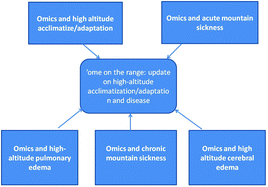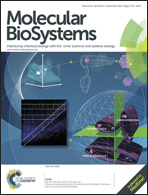‘Ome’ on the range: update on high-altitude acclimatization/adaptation and disease
Abstract
The main physiological challenge in high-altitude plateau environments is hypoxia. When people living in a plain environment migrate to the plateau, they face the threat of hypoxia. Most people can acclimatize to high altitudes; the acclimatization process mainly consists of short-term hyperventilation and long-term compensation by increased oxygen uptake, transport, and use due to increased red blood cell mass, myoglobin, and mitochondria. If individuals cannot acclimatize to high altitude, they may suffer from a high-altitude disease, such as acute mountain disease (AMS), high-altitude pulmonary edema (HAPE), high-altitude cerebral edema (HACE) or chronic mountain sickness (CMS). Because some individuals are more susceptible to high altitude diseases than others, the incidence of these high-altitude diseases is variable and cannot be predicted. Studying “omes” using genomics, proteomics, metabolomics, transcriptomics, lipidomics, immunomics, glycomics and RNomics can help us understand the factors that mediate susceptibility to high altitude illnesses. Moreover, analysis of the “omes” using a systems biology approach may provide a greater understanding of high-altitude illness pathogenesis and improve the efficiency of the diagnosis and treatment of high-altitude illnesses in the future. Below, we summarize the current literature regarding the role of “omes” in high-altitude acclimatization/adaptation and disease and discuss key research gaps to better understand the contribution of “omes” to high-altitude illness susceptibility.


 Please wait while we load your content...
Please wait while we load your content...